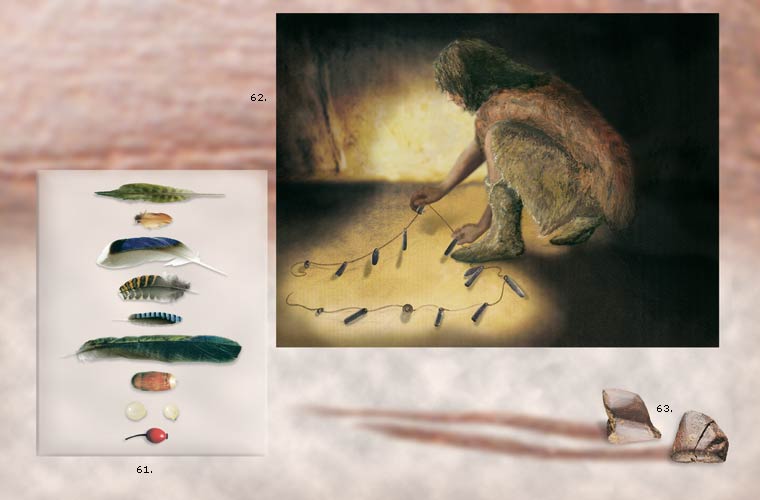Ritual activities.
One feature that is common to all known primitive societies is the extensive development of beliefs relating to the beings that inhabit nature and the phenomena that occur in it. In some societies there are figures (shamans, medicine men, sorcerers, etc.) who have the power to interpret and in some way control the different signs relating to the earth; They also transmit and revive the world of myths and beliefs while guiding the destiny of groups and individuals. However, any ethnographic parallel should be approached with great caution. As J.M. Barandiaran said, "the facts are all too capable of docilely lining up as soon as they are illuminated from one side. Similarity of forms is tempting and may lead us to erroneous conclusions".
Probably from the very earliest Palaeolithic period, humans found ways of altering their appearance, using different substances and colourings. They first realised thousands of years ago that with the right preparation and use, certain natural elements could provide a range of colours. Red ochre, also known as red hematite, is found in abundant quantities in nature and has outstanding properties for daubing. Fragments of this material are sometimes found with grooved surfaces, suggesting that the powder was scratched off. As ethnographic parallels from everyday life show, it was in wide spread use: for tanning hides, for body painting and for tattoos. Because its colour is traditionally associated with blood, health and life, it is also found in funereal contexts,
gipuzkoakultura.net


gipuzkoakultura.net
miércoles 31 diciembre 2025
Bertan > The Magdalenian pendants of the Praileaitz I cave(Deba) > Versión en Inglés: Ritual activities

61. Like a number of primitive peoples living around the world today, the people of the Praileaitz I cave used not only necklaces and ochre, but also bright-coloured feathers of different birds, seeds and fruits.
Feathers of green woodpecker, redwing, mallard, woodcock, jay and magpie, acorn, mistletoe seed and rosaceae seed. 62. The occupant of the Praileaitz I cave would have used the light from a lamp or torch to carry out activities in the inner room whose nature we can only guess at now. He or she left behind 20 stone pendants, 14 of which form a large necklace. © Xabier Peñalver / Sonia San Jose


